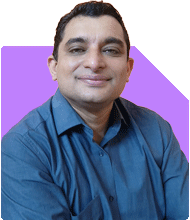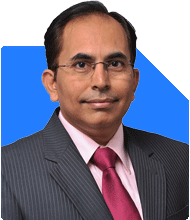Ramalingam Kalirajan |10902 Answers |Ask -Follow
Mutual Funds, Financial Planning Expert - Answered on May 12, 2024
He has an MBA in finance from the University of Madras and is a certified financial planner.
He is the director and chief financial planner at Holistic Investment, a Chennai-based firm that offers financial planning and wealth management advice.... more

Ramalingam I am Murugesan I am 47 years old. Advise me to invest in SIP. Fund name and Amount please
Given your age and the potential need for stability in your investment portfolio, you may want to consider a mix of equity and debt funds. Equity funds offer growth potential but come with higher volatility, while debt funds provide stability but typically offer lower returns.
For equity funds, you may consider large-cap or multi-cap funds, which invest in well-established companies with a track record of stable performance. These funds can provide growth potential while mitigating some of the risks associated with smaller companies.
For debt funds, you may look into short-term or medium-term debt funds, which invest in fixed-income securities like government bonds and corporate bonds. These funds offer stability and regular income, making them suitable for investors seeking capital preservation.
As for the amount to invest in SIPs, it's important to determine a comfortable amount based on your financial goals, income, and expenses. A general guideline is to aim for a savings rate of around 10-15% of your income, but this can vary depending on individual circumstances.
It's crucial to choose funds that align with your investment objectives and risk tolerance. I recommend consulting with a Certified Financial Planner who can assess your financial situation holistically and recommend a personalized investment strategy tailored to your needs.
Best Regards,
K. Ramalingam, MBA, CFP,
Chief Financial Planner,
www.holisticinvestment.in
You may like to see similar questions and answers below
Ulhas Joshi |280 Answers |Ask -Follow
Mutual Fund Expert - Answered on Mar 30, 2023
Ramalingam Kalirajan |10902 Answers |Ask -Follow
Mutual Funds, Financial Planning Expert - Answered on Apr 17, 2024
Ramalingam Kalirajan |10902 Answers |Ask -Follow
Mutual Funds, Financial Planning Expert - Answered on May 09, 2024
Ramalingam Kalirajan |10902 Answers |Ask -Follow
Mutual Funds, Financial Planning Expert - Answered on Oct 18, 2024
Ramalingam Kalirajan |10902 Answers |Ask -Follow
Mutual Funds, Financial Planning Expert - Answered on Jul 03, 2025
Anu Krishna |1749 Answers |Ask -Follow
Relationships Expert, Mind Coach - Answered on Dec 17, 2025
Anu Krishna |1749 Answers |Ask -Follow
Relationships Expert, Mind Coach - Answered on Dec 17, 2025
Radheshyam Zanwar |6748 Answers |Ask -Follow
MHT-CET, IIT-JEE, NEET-UG Expert - Answered on Dec 17, 2025
Anu Krishna |1749 Answers |Ask -Follow
Relationships Expert, Mind Coach - Answered on Dec 17, 2025
Dr Shakeeb Ahmed Khan |184 Answers |Ask -Follow
Physiotherapist - Answered on Dec 17, 2025
T S Khurana |538 Answers |Ask -Follow
Tax Expert - Answered on Dec 17, 2025
T S Khurana |538 Answers |Ask -Follow
Tax Expert - Answered on Dec 17, 2025
Janak Patel |72 Answers |Ask -Follow
MF, PF Expert - Answered on Dec 17, 2025
Ramalingam Kalirajan |10902 Answers |Ask -Follow
Mutual Funds, Financial Planning Expert - Answered on Dec 17, 2025
Samraat Jadhav |2511 Answers |Ask -Follow
Stock Market Expert - Answered on Dec 17, 2025




























